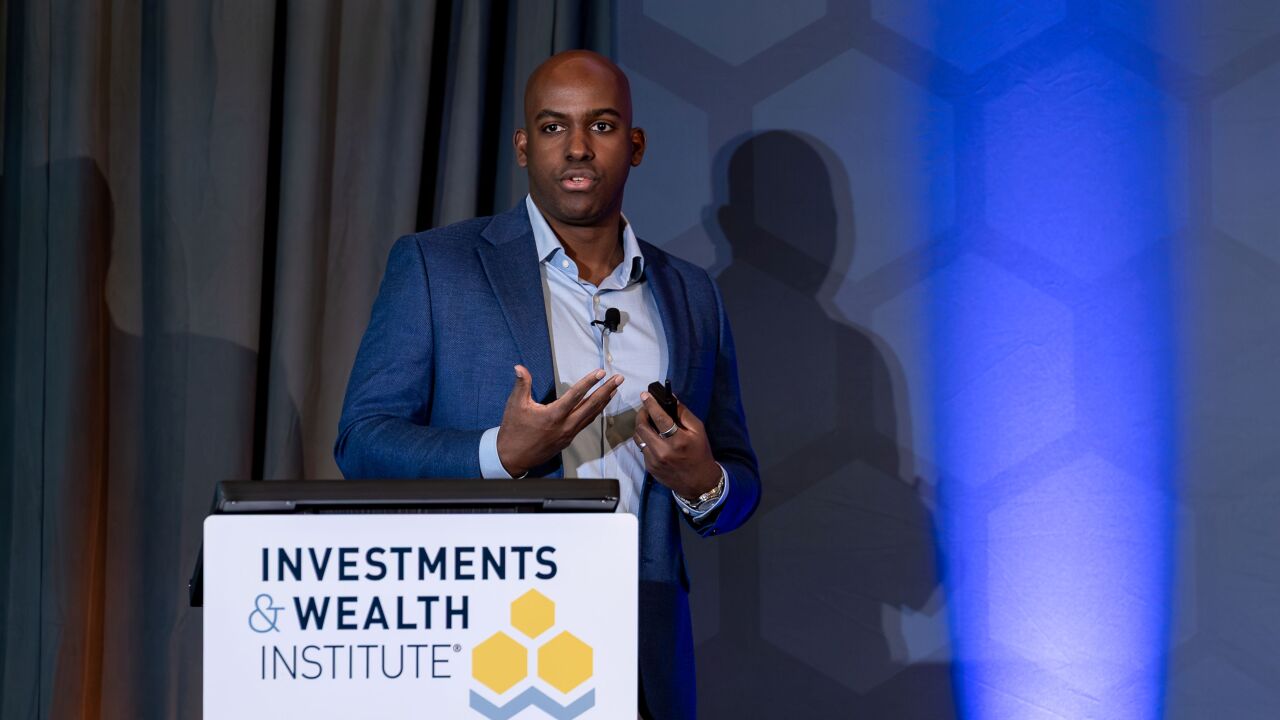When prospective clients arrive at my door, they want to believe that I have all the answers. In these first meetings, however, I ask folks to first put their faith in the markets, before putting their faith in me. That surprises some, but when they come to understand my investment approach, my request begins to make sense. I am not an active manager. Rather than promising that I will always beat the market, my investment philosophy is grounded in a passive, or more accurately, an “indexing with a value-added” approach.
STRADDLING THE ACTIVE/PASSIVE DIVIDE

Not all investors are aware of the long-running industry debate between active and passive (or indexing) styles. Ask an individual investor, “Are you more comfortable with active or passive investing?” and they instinctively choose active. I think that’s because their impressions of passive investing are influenced by the negativity surrounding the word passive. After all, we hear about passive-aggressive managers, and writers are warned against using the passive voice. Doctors urge us to maintain an active lifestyle.
Finally, there seems something a little un-American about being content with average returns, rather attempting to outperform. Who wants to be a slacker? Frankly, that’s why I use “index with a value added” to describe my investment philosophy.
I begin by explaining how I embraced this management approach decades ago when I was introduced to Dimensional Fund Advisors. At that point, there was an immediate paradigm shift in my practice. I evolved out of the commission- based business to fee-only management founded on academic research.
To lay the groundwork for my value-add philosophy for clients, I begin with the academic roots of the Efficient Market Hypothesis. Developed by Nobel Laureate Eugene Fama in 1965, EMH holds that securities always trade at a fair price that reflects all available market information. So, if securities never can be over- or under-valued, instead of selecting what they hope will be winners, passive managers own all the stocks or bonds in the same proportions as the index. While advisers are well versed in these differences, they may forget it’s worth explaining to prospective clients who may be learning the nuances for the first time.
On the other hand, I explain to those who are coming to my office for the first time that active managers believe macroeconomic research and analyses of companies’ finances and products can help them identify the best performers in a given stock universe. Of course, due to active managers’ research, costs are higher for active funds.
First-time visitors often perk up when I show them this chart (below) which explains differences in management styles.

Prospects and clients are often most interested in the performance comparison between these opposing investment philosophies. And history shows active management at the individual stock level is not worth the additional costs for most asset classes. To illustrate that, I often print and share the
I also share with prospects and clients how passive investing is resonating with today’s investors. These facts from a June
-
Some advisers may think the regulations won’t affect them. Here’s why they’re wrong.
June 14 -
The new regulations are “arbitrary and capricious," a trade organization asserts.
June 7 -
The U.S. Chamber of Commerce, SIFMA, FSI and other groups are asking a Texas court to vacate the Labor Department's new regulations less than a year before the rule goes into effect.
June 2
Because the market is beyond our control, a properly diversified indexed portfolio that reflects the market gives us the best chance to meet their goals. My clients understand that there is plenty that is active about this approach. We don’t spend time trying to identify mispriced securities or time the markets. Instead, we base our portfolios on a deep appreciation for the value of academic research on the markets and returns. And we commit to solid portfolio design, disciplined stock picking and actively work to control investment costs. That doesn’t sound like settling to me.
FULFILLING MY FIDUCIARY DUTY
Given the Department of Labor’s fiduciary ruling that advisers must manage retirement assets in the best interests of their clients, my investment approach seems especially wise. And DFA co-founder Rex Sinquefield's opening statement in debate with Donald Yacktman at the Schwab Institutional conference in San Francisco, October 12, 1995, rings more true than ever. He said, “For most asset classes there are long-time series of historical data that allow us to form reliable estimates of the risk of a given class and how closely the behavior of that class correlates with the behavior of other classes. An adviser can estimate the risk of different combinations of asset categories and find the overall portfolio strategy that best suits the circumstances and risk tolerance of his or her client. Thus, a financial adviser can use historical data to form a long-run plan.”
Sinquefield went on to explain the difficulty of estimating the future risk levels of actively managed portfolios. He concluded, as I do, that “asset class investing allows reliable planning and implementation of portfolio strategies,” making it the “most prudent way to invest a client's money.”
Stay diversified, stay the course.





